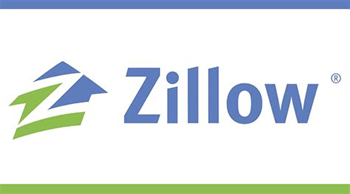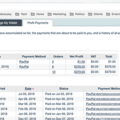Here’s how to keep your real estate marketing emails out of the SPAM box
In
October,
Google
announced
coming
changes
to
their
email
deliverability
policy.
Other
providers
like
Yahoo
and
AOL
have
made
similar
announcements
and
will
tighten
their
SPAM
filters.
The
changes
are
set
to
take
effect
in
February.
If
you’re
currently
using
email
as
a
form
of
marketing,
staying
abreast
of
these
changes
and
adjusting
your
strategy
accordingly
will
keep
you
out
of
the
spam
box.
Google’s
policy
change
states
that
the
coming
updates
will
primarily
affect
bulk
senders,
those
sending
more
than
5,000
emails
daily.
Their
stated
goal
is
to
keep
users’
inboxes
safe
and
spam-free.
With
Google
reporting
that
their
defenses
already
stop
more
than
99%
of
unwanted
emails,
nearly
15
billion
per
day,
these
new
restrictions
will
help
users
see
even
less
clutter
in
their
inboxes.
The
primary
focus
Since
many
bulk
senders
fail
to
secure
and
configure
their
systems
properly,
this
makes
it
easy
for
attackers
to
blend
in
unnoticed.
To
address
this
issue,
Google
concentrated
on
a
critical
aspect
of
email
security:
confirming
the
sender’s
identity.
Beginning
last
year,
Google
implemented
a
policy
requiring
authentication
for
emails
sent
to
Gmail
addresses.
This
change
has
significantly
reduced
the
volume
of
unauthenticated
emails
received
by
Gmail
users,
which
helps
organize
inboxes
and
enhances
the
efficiency
of
blocking
billions
of
harmful
emails.
Here
are
7
steps
you
can
take
to
ensure
maximum
deliverability:
-
Authenticate
your
email:
Email
authentication
is
used
to
prevent
fraudulent
emails
from
spammers
and
spoofers,
ensuring
that
recipients
can
trust
the
authenticity
of
emails.
It
serves
as
a
crucial
protection
for
individuals
against
malicious
impersonation
and
a
defense
for
brands
against
being
labeled
as
spammers.
Key
types
of
email
authentication
include
SPF,
DKIM
and
DMARC.
Google’s
2024
requirements
for
bulk
senders
emphasize
the
need
for
strong
authentication
using
these
methods
to
prevent
spoofing
and
avoid
emails
being
marked
as
spam. -
Include
unsubscribe
links:
Bulk
senders
must
adhere
to
the
2003
CAN-SPAM
Act,
which
states
that
senders
must
provide
a
way
for
recipients
to
opt
out
of
unwanted
emails.
Ensuring
your
emails
allow
for
easy
opt-outs
and
honoring
opt-out
requests
helps
attain
better
deliverability
rates. -
Don’t
send
spammy
emails:
One
of
the
best
ways
to
stay
in
Google’s
good
graces
and
your
recipients’
graces
is
to
send
content
that
people
want.
Consumers
will
look
forward
to
receiving
your
emails
if
they
are
attractive,
engaging,
funny
or
informative.
Avoid
spam-triggering
words
such
as
No.
1,
cash,
free,
bonus,
earn
more
money,
be
your
boss,
gift,
etc.
Try
not
to
make
exaggerated
claims,
and
do
not
use
misleading
subject
lines.
Before
sending,
ask
yourself,
would
I
welcome
this
type
of
email
communication? -
Keep
your
database
updated:
Maintaining
good
database
hygiene
is
critical
to
improving
deliverability.
Remove
people
not
engaging
with
your
content,
honor
opt-outs
and
keep
your
emails
updated.
Email
addresses
will
inevitably
change
as
individuals
move
from
one
employer
to
another.
Staying
on
top
of
those
changes
and
deleting
old
and
outdated
contact
information
will
save
you
from
ending
up
in
the
spam
folder. -
Use
advanced
segmentation
and
merge
fields:
Sending
one
email
to
your
entire
database,
or
the
“spray
and
pray”
method,
is
not
recommended.
Instead,
segmenting
your
database
by
persona
allows
you
to
send
more
personalized
messages
to
specific
audiences.
In
addition,
using
custom
fields
and
merge
tags
helps
personalize
your
messaging
even
further,
making
your
audience
feel
like
you’re
speaking
directly
to
them. -
Monitor
engagement
and
keep
spam
rates
low:
More
than
anything,
you
want
people
opening,
forwarding
and
replying
to
your
emails.
When
people
are
engaging
with
your
content,
it
tells
providers
that
your
emails
are
welcome
and
that
you
are
a
safe
sender.
Keeping
an
eye
on
engagement
rates
will
help
you
better
understand
what
type
of
content
resonates
with
your
audience.
This
also
means
monitoring
how
often
you’re
sending
as
well
as
monitoring
if
your
engagement
rates
tend
to
drop
with
a
higher
email
frequency.
A
good
practice
to
follow
is
to
send
no
more
than
once
per
week
and
even
less
if
engagement
falls
with
higher
frequency.
Keeping
your
spam
rate
below
0.3%
(3
complaints
per
1,000
emails
sent)
will
also
be
vital
in
adhering
to
Google’s
spam
thresholds.
However,
staying
closer
to
0%
is
highly
recommended. -
Optimize
the
email
structure:
Broken
links,
too
many
links,
short
links
or
image-only
emails
will
trigger
spam
alerts.
When
it
comes
to
images,
this
is
a
hot
topic.
The
best
practice
is
to
use
the
60/40
text-to-image
ratio
as
a
general
rule
of
thumb,
which
suggests
emails
comprise
of
60%
text
and
40%
image.
Additionally,
shortening
links
using
specific
software
is
not
a
recommended
practice.
Instead,
try
using
your
email
automation
tool’s
“link”
feature.
Following
good
email
sender
practices
will
help
to
keep
you
in
good
standing
and
keep
your
emails
going
to
your
targeted
recipient’s
inbox.
Remember,
this
is
a
long-term
practice,
and
much
like
building
one’s
reputation,
building
a
positive
sender
reputation
happens
over
time.
Still,
it
will
pay
off
with
happy
recipients
and
more
business
growth
if
done
well.
Diana
Zaya
is
the
founder
and
president
of
Maverick
Systems,
a
data
analytics
and
consulting
firm
dedicated
to
equipping
brokerages
with
in-depth
agent
and
brokerage
analytics,
astute
data
analysis
and
inventive
strategies
producing
better
agent
recruitment
and
retention
outcomes.
Related






